In 2007, Udi Manber, who was Google’s VP of Engineering at the time, said that between 20-25% of the searches Google sees each day are new and unique searches they have never seen before.
That statement has always stuck with me.
In 2017, Ben Gomes, Google’s VP of Engineering at that time, said that the number was now around 15%.
When you think of the trillions of searches done in Google every year, that is still an astounding number.
For that reason, one of the things I spend a lot of time doing is staying on top of keyword data with client sites. Even though I typically do comprehensive keyword research for each new client at the beginning of a project, to me the keyword list we are targeting is a living document. Something that we are constantly adding to as new keywords are discovered or as queries get used more often that were not used before.
With that in mind, there are two things I like to do either monthly or quarterly on client projects, depending on the scope. Both of them involve using Semrush to collect some new ideas for boosting traffic.
Semrush collects a ton of data, and I think that sometimes gets overlooked.
First, new positions. These are search queries that the site was not ranking for before that have shown up in the SERPs. Pull up your domain inside Semrush, and click on the ‘View details’ button under the organic keywords list, or you can click ‘Organic Research’ in the menu on the left side of the screen.
On the next page, select ‘Positions Changes’ on the menu at the top of the page.
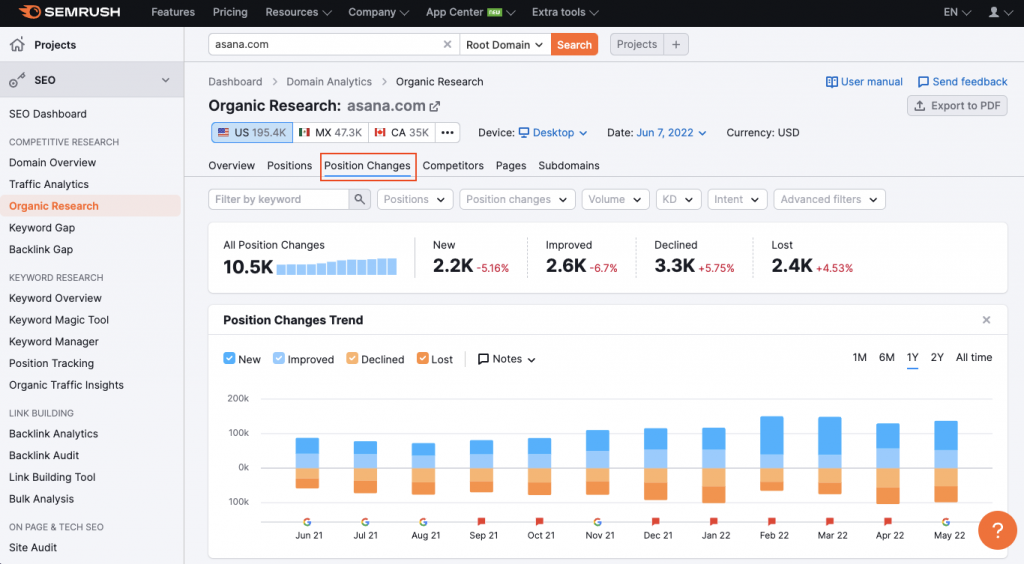
On the next page, there is a group of drop down menus. Select the one that says ‘Position changes’ and choose ‘New’. Then click the ‘Apply’ button.
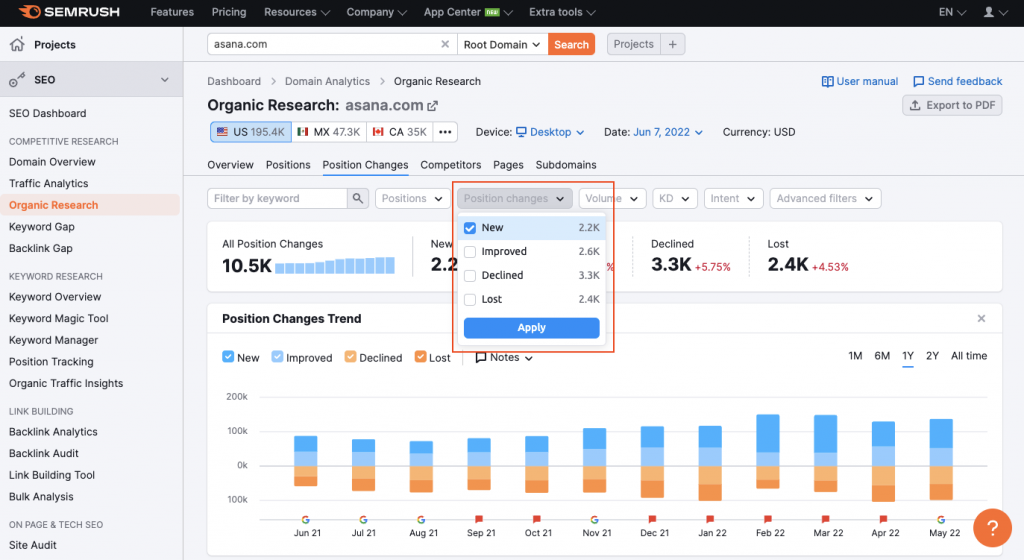
Now you can sort these keywords however you want. I often times like to start by narrowing it down to keywords ranking between 10-25. These are keywords that popped up in the search results recently and with a bit of focus, you could get inside the top 8, maybe top 5. On a really big keyword list, I might use volume to sort them as well.
The second thing I like to do is use the keyword gap tool.
I select the top 2-3 competitors, or if there are a lot of really strong competitors I will rotate these, and I look at the “Untapped” keywords. These are keywords that at least one of the competitors ranks for, but the site I am working with does not.
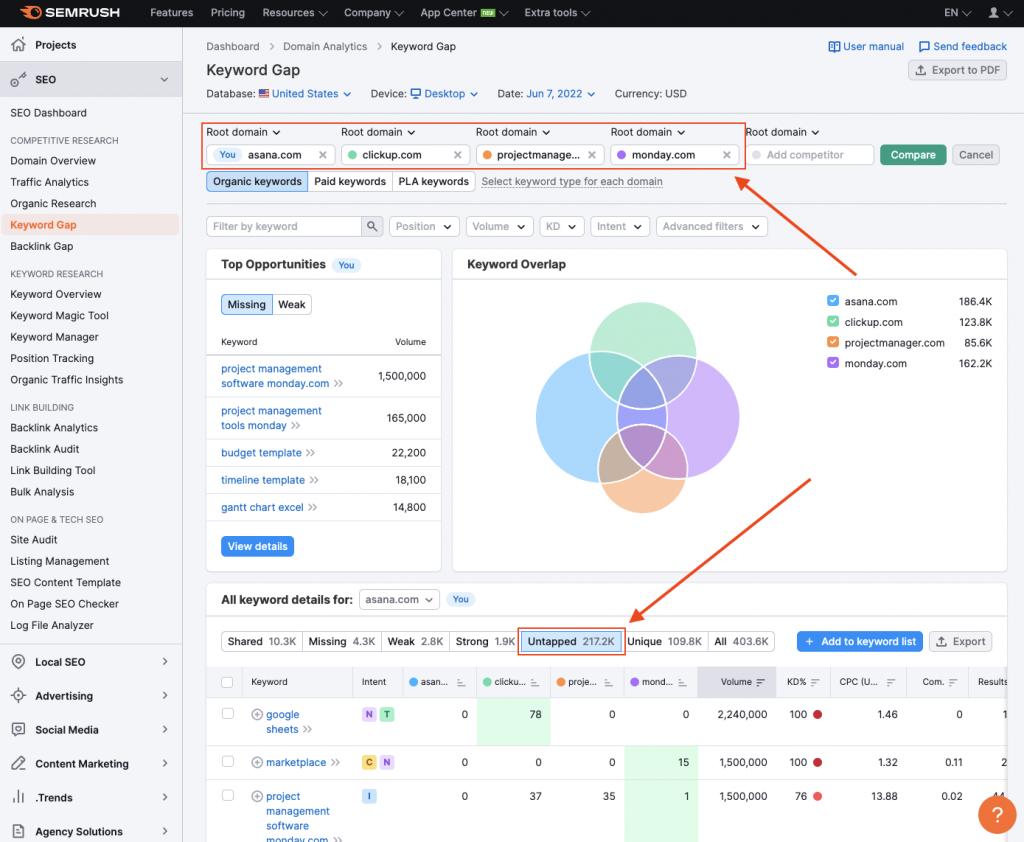
There are a couple of filters I like to use here too. Under Position I will select Competitors and choose ranking positions between 1 and 5. This will pull keywords that competitors are ranking in the top 5 for.
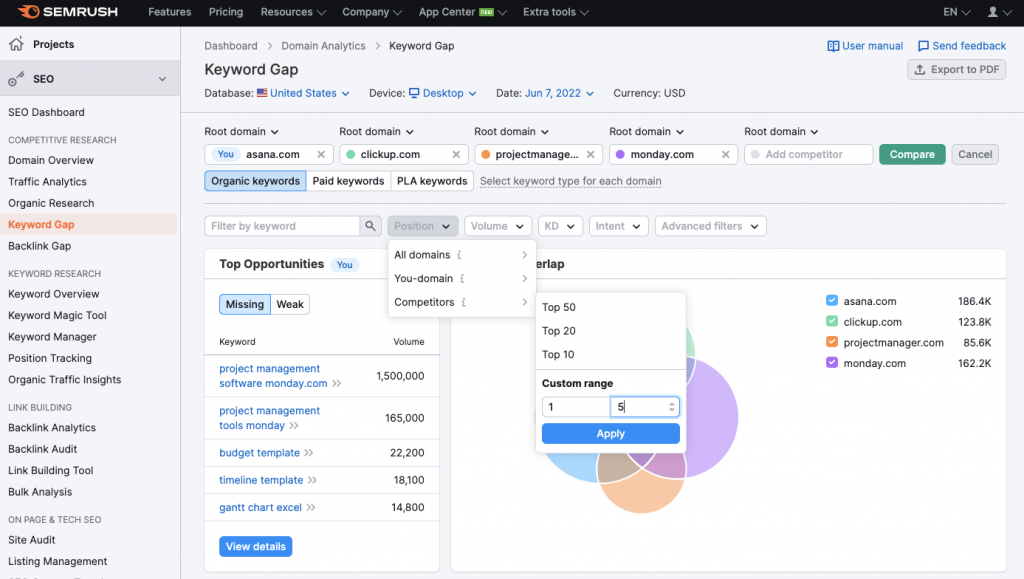
Second, if you are up against really well known brands, it is a good idea to use the Advanced filters option and exclude their brand names. Otherwise you will end up with a lot of additional queries to search for relating to their brand names.
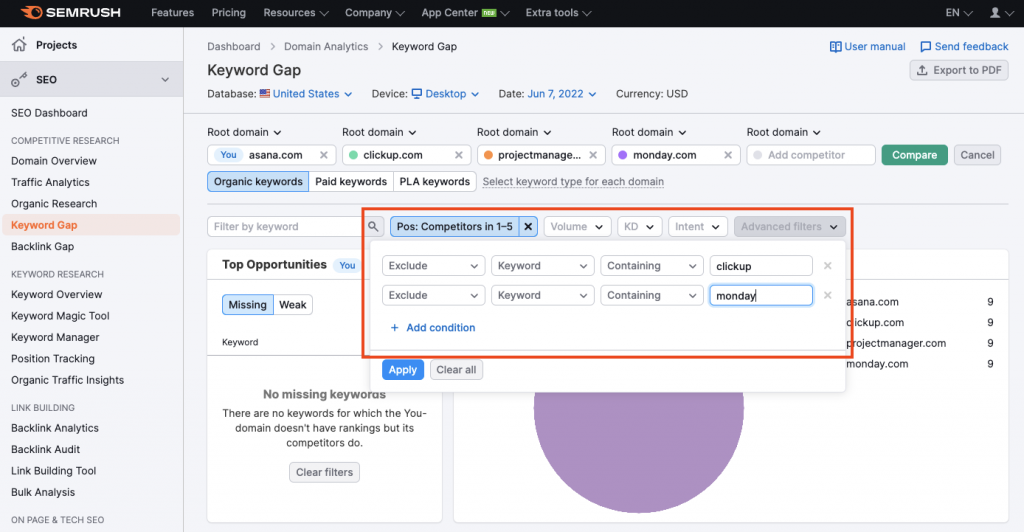
These are two quick ways I stay on top of new opportunities for boosting organic search traffic to a website.


